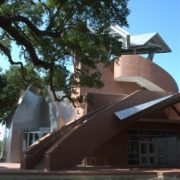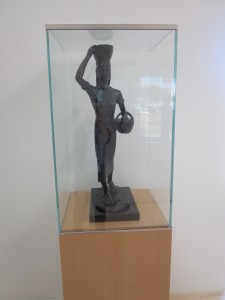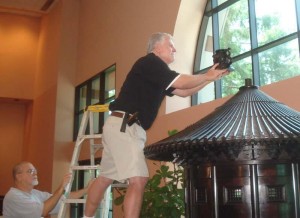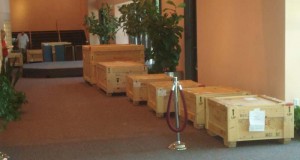
locomotive in Smithsonian storage, waiting for its trip to Baltimore
The Smithsonian’s National Museum of American History recently donated a vintage 1938 fireless steam locomotive to our Affiliate in Baltimore, the B & O Railroad Museum. On August 18, Affiliations and Museum staff were on hand to document this dramatic move.
The move took two days to complete. One to rig the locomotive onto a palette inside the American History Museum’s storage facility, and another day to load it onto a truck, drive it to Baltimore, and unload it in the restoration shop of the B & O Museum.
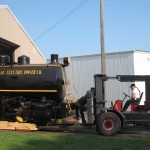
a special forklift eases the locomotive out of storage. very slowly.
The locomotive was built by the Heisler Locomotive Works in Erie, Pennsylvania for the Potomac Electric Power Company (Pepco) in 1938. Unlike other steam engines, this unique 35-ton locomotive did not need a fire to produce steam; instead it was filled with steam and superheated water from the power plant’s boilers under high pressure at temperatures around 400 degrees Fahrenheit. The locomotive was capable of operating by itself for approximately five hours on one charge of steam and superheated water.

lifting the locomotive onto its ride, a flatbed truck
Bill Withuhn, Smithsonian Curator of Technology and Transportation, contacted the B&O Railroad Museum more than a year ago to begin negotiations for the transfer of the locomotive to Baltimore. “The fireless was a trusty workhorse locomotive; one that deserves to be on exhibition for its contributions to lighting Maryland and the nation’s capital. We are pleased to make possible this transfer to our affiliate.”
In the U.S., fireless locomotives ran exclusively on the networks of tracks located within the boundaries of some of the largest coal-fired power stations operated by utilities. The locomotive needed to remain close to the power plant in order to be recharged. An early example of green technology, the fireless steam locomotive emitted only steam vapor, unlike other locomotives which release smoke exhaust.
B&O Railroad Museum Executive Director, Courtney Wilson said, “This locomotive is a scarce type of railroad motive power not represented in our unparalleled collection of 19th and 20th century steam locomotives. It fills an important gap and we are extremely pleased to accept this gift from the Smithsonian.”

we got alot of curious looks cruising on I-95
From 1938 until 1974 the Pepco locomotive operated at the Buzzard Point Power Station in Washington, D.C. hauling coal. From 1974 to 1978 it was used at the Potomac River Power Station in Alexandria, Virginia. In 1979 Pepco restored and donated the locomotive to the National Museum of American History’s Work and Industry collection where it has been in storage. Until now.
On October 15, the B & O will roll the fireless locomotive into its famous roundhouse to celebrate its 10th anniversary as a Smithsonian Affiliate. There it will join other Smithsonian artifacts on loan to the Museum, including 50 models of historic locomotives and railway cars and the boiler from the first locomotive used in the Western Hemisphere, the Stourbridge Lion.
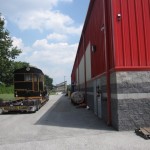
rounding the corner to the back door of B & O's storage facility. almost there!

2 forklifts hold the locomotive in mid-air, while the flatbed truck drives out of the way
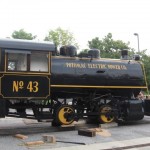
easing it off its palette, a few inches at a time
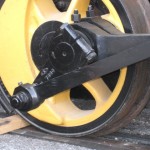
hitting the rail!
See more photos in the Smithsonian Affiliates group pool on flickr.





